FORECAST:
Saturday (High 88, Low 72): Windy and muggy with increasing clouds during the day. Rain and thunderstorms are likely during the evening and overnight hours, and some storms may be severe.
Sunday (High 70, Low 63): Storms ending during the morning hours. Rainy and windy throughout the day.
Monday (High 58, Low 45): Partly to mostly sunny. Turning sharply cooler.
EXTENDED OUTLOOK:
Tuesday (High 60, Low 36): Sunny.
Wednesday (High 66, Low 34): Sunny.
Thursday (High 72, Low 41): Mostly sunny with a 20% chance of showers.
Friday (High 74, Low 50): Mostly sunny with a 20% chance of showers.
PRONÓSTICO:
Sábado (Máxima: 88, Mínima: 72): Ventoso y bochornoso, con nubosidad creciente durante el día. Probabilidad de lluvia y tormentas eléctricas durante la tarde y la noche, y algunas tormentas podrían ser severas.
Domingo (Máxima: 70, Mínima: 63): Tormentas que terminarán durante la mañana. Lluvia y viento durante todo el día.
Lunes (Máxima: 58, Mínima: 45): Parcialmente soleado. Volviéndose bruscamente más frío.
PERSPECTIVA EXTENDIDA:
Martes (Máxima: 60, Mínima: 36): Soleado.
Miércoles (Máxima: 66, Mínima: 34): Soleado.
Jueves (Máxima: 72, Mínima: 41): Mayormente soleado con un 20% de probabilidad de lluvias.
Viernes (Máxima: 74, Mínima: 50): Mayormente soleado con un 20% de probabilidad de lluvias.
NOTES:
The National Weather Service has determined that a tornado tracked from Burnsville, MS to Walnut Grove, TN yesterday evening, a little over 16 miles. It only did tree damage; no homes were in the path. So nobody got hurt. It has been rated E/F-1 with peak winds estimated at 105 miles per hour.
The Cullman NOAA Weather Radio transmitter is back online. So no more need to tune to those alternate channels, unless you decided you like them better.
If you are not clear on your severe weather safety plan, it is a good time to review it. Make sure all your loved ones know we have another overnight threat coming up.
Yesterday and today mark the anniversary of the 1974 tornado outbreak that is still as bad an outbreak as this country has ever had on record. Our outbreak in 2011 was similar but more focused in the Southeast (specifically North/Central Alabama), and there was one back in 1932 that looks about as bad, from what records we have. But still when you think of the worst a tornado outbreak can ever get, you think of April 3-4, 1974.
By the way, this event tomorrow evening through Sunday is not going to be that bad - not even close. It's sort of sad that I have to stop and explain that, it's obvious to meteorologists . . . but for anybody who is worried about wild scenarios that are never going to happen in this setup, just know . . . this is worth taking seriously, but nowhere close to "that".
Not sure how this severe weather outbreak overall (which has lasted several days) will stack up historically after it's over and all the surveys have been done over several states. It has definitely been a bad one, even if its main impacts were North of West of most of my readers.
The National Weather Service in Birmingham took the time to put together a great page about the March 15 tornado outbreak, which was one of our higher-end events lately around here, even if it ended up mainly affecting Central and South Alabama, not so much the Northern counties. And even that high-risk event paled in comparison to 1974 naturally.
There is a SKYWARN class in Hartselle this coming Thursday evening.
And this coming Monday evening, the National Weather Service in Nashville is doing a Weather101 class on severe storms. They timed that one pretty good.
While big storms rage over mainly Arkansas this evening, rain remains really isolated in North Alabama and even up into Southern and Middle Tennessee.
And I'm frankly going to wait a few more minutes for the latest local observations to come in. But in the meantime, let's go ahead and look at the synoptic setup of the atmosphere over the country.
Seeing how this stationary front has barely moved over the past 24 hours makes it clear why the forecasts lately have been complex and challenging. And why a lot of the severe thunderstorms have trained over the same areas, causing some flash flooding at times in addition to the storm damage. Right now the warm front is acting as the focus/lifting mechanism for organized severe thunderstorms (capable of producing tornadoes, some potentially long-track and particularly damaging) mainly over the state of Arkansas. But Western and perhaps Middle Tennessee has a lower chance of seeing some of these supercell thunderstorms this evening into the night hours too. And I really thought Central Tennessee was out of the woods for any organized severe threat today. But now they are under a Tornado Watch until 10 PM.
So let's look at the upper-air maps now.
Usually I only show the 500 millibar map, but today we'll look at every level of the atmosphere. And you can see that way up in the air, our upper-level winds are strongly from the Southwest in this setup. Closer to the surface, the winds are more from due South. We are getting lots of moisture from the Gulf of Mexico, and one can easily ascertain by stepping outside for even a minute or two that the air is muggy around here right now. It is unseasonably warm and humid, and the only reason we haven't had the same kinds of issues in Alabama lately that they've had in Tennessee and other states in the Mid-South/Midwest/Ohio Valley regions is that we've also had this strong area of High pressure blocking most of the rain and keeping our atmosphere capped around here when a few showers or storms do form. That's more evident on the surface maps with the fronts today, but even on the upper-air stuff here, you can sort of pick it out as those lines (height contours on these maps, on surface maps where lines connect areas of equal pressure, they're called isobars - winds follow the lines of equal air pressure) that sort of form a ridge over parts of the Southeast. But this ridge of high pressure is getting ready to break down as we head into tomorrow, especially tomorrow night, and that front is going to move through our area.
Even with this ridge of high pressure, not everybody has been immune. There was a tornado observed yesterday evening near the MS/TN/AL state line, and today people from the National Weather Service in Huntsville went to help people from the National Weather Service office in Memphis to survey any storm damage in that area that had the Tornado Warning.
Now for the local observations that I usually put right under the weather maps at the top: Overall it was a partly cloudy day and really breezy, winds gusting well over 20 mph at times. The High in Cullman was 86, and the Low this morning was 70. These are summertime temperatures. Jasper appears to have seen a High of 88, and I'm going to assume a Low of 70, based on the hours their observations are actually showing up today. A lot of hours are showing a value of 0 for temperature and dewpoint there. And we know that's just a technical glitch of some kind. Haleyville saw a High of 84 and Low of 71. Huntsville saw a High of 89 and Low of 71. That actually ties the record High of 89 from 1934. Muscle Shoals saw a High of 88 and Low of 74 today, so ended up just one degree shy of tying their old record of 89 degrees from 1934. The usual temperature for North Alabama this time of year would be in the 70-80 degree range for the daily Highs. Down in Central Alabama, Tuscaloosa got up to 88 degrees, breaking their record of 87 set in 2023. Anniston tied their record High of 86 set in 1969. Nashville saw a High of 87 and a Low of 58. This tied their record High of 87 that was set in 1934. That must have been a warm year. I know this is a warm year.
Radiosonde data from Birmingham this morning showed marginally unstable air. At Jackson, they again had an environment that would be ripe for severe thunderstorms and at least a marginal threat of isolated tornadoes around if the capping inversion at 700 millibars could be overcome. Strong instability was in place there along with strong wind shear.
But their atmosphere has stayed capped today and all the severe weather potential to their North.
There were no weather balloon launches from Tennessee or Kentucky today, I noticed.
Tomorrow into Sunday is when our ridge of High pressure really breaks down and this front is finally able to move through the region. I won't be worry to see it depart. It has brought enough misery to too many people for several days now.
Tomorrow during the day, most of the day, our rain chances look very low even by the GFS.
And the NAM keeps us as dry as a bone going into the afternoon.
It is the night hours we'll have to watch, when rain and thunderstorms are likely. We'll have to watch for severe potential, and we'll talk about that a little later. But for right now, let's just get the basics of this forecast down. Given the abundant daytime heating, I'm forecasting a High of 88 tomorrow, and going with persistence tonight, Low near 70. The models keep wanting things to be in the upper 60's, but we keep seeing Lows near 70. And I'm going with what's really happening the past few nights/mornings.
It'll be another windy day tomorrow, and it remains to be seen whether we'll need a Wind Advisory or not. But winds could gust up to at least 20-30 mph ahead of any storms later.
The rain should still be pushing through the area by midday/early afternoon Sunday. Any severe threat will probably end during the morning hours, early morning, but these things can be a close call sometimes. Looks to stay fairly windy with heavy rainfall Sunday, maybe some thunder lingering. We'll look at the severe potential below, but based on past experience, I think that will end during the early morning hours Sunday and we'll just have mainly rain and wind lasting through the rest of the day. Look for a High of 70 or so, a Low in the lower 60's.
We'll have a lighter North/Northwesterly breeze Monday as drier air filters in here, much cooler air, and skies become partly to mostly sunny. Look for a High near 58 and a Low near 45, mid-40's as there will be some humidity left from Sunday night preventing us from cooling so much right away.
High pressure will be settling over the Ohio River Valley and also building in from the coast of Texas and Louisiana on Tuesday. And we'll see sunny skies, a High only making it to about 60 degrees, the morning Low in the upper 30's or perhaps even mid-30's. The latest guidance is not trending as cold, but several previous model runs over the past couple days at least have shown where we'd have to watch for frost by at least Wednesday morning. So let's look at Wednesday now.
Wednesday we'll be between that High pressure at the Gulf Coast and the Mid-Atlantic coast and stay sunny with a High rebounding to the mid-maybe-upper-60's. The Low should be in the mid-30's or perhaps even lower 30's. So again anybody with crops, keep an eye out for some late-season frost here.
It looks like if that Low pressure system moving through the Ohio Valley brings us any rain, it'll be on Thursday and probably confined to our Tennessee counties. Skies should stay mostly sunny around here with a High in the lower 70's and Low in the lower 40's. And we'll throw in a 20% chance of rain, which means really isolated.
And actually looking at Friday's guidance, looks reasonable to put a 20% chance of rain in there for Friday too. A lot of this might be isolated rain overnight between the two days, and by Friday, it could certainly be down on the Alabama side. Just during the day Thursday it looked like it'd stay more in Tennessee. Looking for a High in the lower-to-mid-70's on Friday, the Low near 50.
Most of the flooding issues are likely to stay focused over Arkansas, the Missouri Bootheel, into about the Western half of Tennessee. However, we do have some risk of it in North Alabama with this system, even if the risk is low.
Most of us will see about two inches of total rainfall out of this system, but especially in Northwest Alabama up into adjacent parts of Tennessee, amounts of three inches or greater are possible for this forecast period. And as you get toward Memphis back to Little Rock especially, amounts up to 7 inches or greater are possible, and with that comes the risk of flash flooding.
Now let's talk about the local threat of severe weather potential tomorrow through Sunday.
MESOSCALE DISCUSSION:
Well this is interesting: the High-Res NAM is now showing a timing closer to what the SREF was a day or two ago, where the squall line isn't making it into Northwest Alabama until around 7 AM Sunday. The top graphic I just showed is valid at 1 AM going into Sunday.
Another Convection-Allowing-Model, the HRRR, is showing the storms arriving as early as 10 PM CDT Saturday, then the other two graphics are valid at 1 AM and then 7 AM Sunday.
And this looks more plausible with this setup.
If the RAP is right, then we'll have to watch things in Northwest Alabama as early as between 4-7 PM tomorrow. And it also hints at a couple of supercell thunderstorms trying to develop ahead of the main squall line around 1 AM. So there are a few scenarios that could play out here.
Not sure I trust any of these CAMS for parameters, so going to go back to the NAM for that and then balance it out with whatever the SREF ensemble has to show. I think the HRRR probably has the right idea here but also lean a little toward the RAP where it'd be wise to watch tomorrow evening just in case we have a faster timing, and/or any discrete cells that try to organize ahead of the main line. We've seen that happen before this year, mainly the faster timing part.
Here's the Energy Helicity Index from 7 PM Saturday to 1 AM Sunday to 7 AM Sunday and then finally 1 PM Sunday. And it is just a wide window of time when the unstable air/wind shear are enough to support at least a marginal threat for severe thunderstorms, especially over the Western Counties. But again the timing is a little questionable. I don't really think we'll have a severe weather threat between sundown tomorrow and early afternoon Sunday, but that's what a wide window this is showing for the atmosphere being ripe enough for it. Trying to pin down exact details here might be a lost cause, might just have to go with the abstract main ideas for this forecast.
Looking at the SREF, I chose 4 AM Sunday as the best arbitrary time to compare parameters.
The dewpoints look to be about 60-65 on the Tennessee side, about 65-70 degrees on the Alabama side. That's really unstable, even for early April, especially during the dark hours.
Bulk shear between 0-6 kilometers up looks like it'll be between 40-60 knots, which is more than enough wind shear to fuel severe thunderstorms. And this would actually favor some supercell thunderstorm potential.
We definitely have enough wind shear though, at the lowest kilometer and up to 3 kilometers, more than 200 units of Helicity. So this will include a tornado potential, even if it ends up being a low-end isolated tornado potential. And if our instability really stays that weak, with only 500 j/kg or less of surface CAPE and similar Lifted Indices, then it'll be a lower-end tornado threat.
The supercell composite numbers and significant tornado parameter values don't look especially alarming either. Just par for the course, general severe weather threat, which looks to be mostly focused West of I-65 but also some risk extending up to Huntsville and into our Tennessee counties, places like Winchester back to Lawrenceburg and Waynesboro.
The only thing that really does jump out is that it looks like there is an enhanced chance for tornadic supercells in Northern and Central Mississippi. And we'd have to watch any storms that formed there for how they held together into Alabama as they tracked East or Northeast. A lot of it depends on where the squall line is by this time of night, or I guess I should say morning, but it'll still be dark, 4 AM.
At 7 PM the NAM's forecasting sounding going into Saturday night shows marginal instability, ample wind shear to support a threat for severe thunderstorms capable of damaging winds, severe hail, and isolated tornadoes. This forecast sounding is near Cullman. It's showing a temperature of 76, dewpoint of 65, and parcels of air being able to rise above any warm-layer inversions and start to form storms.
So let's try to put all that information together. It's been a humbling experience this time.
Here are the official Storm Prediction Center convective outlooks for tomorrow and Sunday. The top one runs from 7 AM Saturday to 7 AM Sunday. The bottom one runs from 7 AM Sunday to 7 AM Monday. And you can see they are allowing for the possibility, very low chance of some severe thunderstorms lingering beyond daybreak Sunday in North Alabama/parts of Southern TN.
There is an enhanced threat for damaging winds in some of the initial supercells or even later as the storms form into more of a line, focused from West TN back through most of MS, AR, and LA.
The better chance of extra-large hail in supercell thunderstorms is outlined for mainly Southern Arkansas down into Louisiana, clipping parts of East Texas.
And then there's an even smaller zone of the really significant tornado threat tomorrow. It's mainly in Northern Louisiana and far Southern Arkansas, but some of those supercells could originally fire up in Eastern Texas.
Around here, in Northern Alabama into Southern Middle Tennessee, our tornado threat looks minimal, with about a 2% chance of somebody seeing a tornado. And our risk for severe hail and winds are on the low-to-routine end of the spectrum too.
Most of us from Huntsville to Cullman up to Fayetteville and points West have a basic 15% risk of severe thunderstorm winds that could produce damage, but notice that Florence/Muscle Shoals down to Russellville and Hamilton are included in that hatched area where winds could get up to more the 70-80 mph range instead of the more usual 60-70 mph range you'd see in severe thunderstorms.
We've all got the basic 15% risk for large hail, probably coin-sized hail with most of these storms instead of ball-sized hail. At least within the basic risk zone we do. There is a narrow corridor of a marginal 5% risk of it before we get over to Scottsboro, Rainsville, Fort Payne, Guntersville, Albertville, some places that may not see any severe weather at all out of this event. May be just general rain and thunderstorms by the time it gets over there.
And basically all of us around here are outlooked for the minimal 2% tornado risk. The higher probabilities are to our North and West.
So this has been a rough storm system for several days, and Arkansas is having another rough evening as we speak. But it doesn't really have the look of a classic severe weather outbreak around here tomorrow night into Sunday morning. We may have some issues, and any time you've got a High in the upper 80's in the first week of April, you have to watch things carefully. But taking everything together, I think this is a pretty routine, maybe even low-end severe weather setup. But even if only one or two places in our broad region were to see fairly significant storm damage, whether it comes in a squall line or in a storm out ahead of a squall line, that's enough of a threat to respect. This looks to me like a lower-end severe thunderstorm setup, typical squall line, which might only affect places along and West of I-65 anyway . . . but it could also throw us a curveball somewhere. It did that today in Tennessee in a good way; a Tornado Watch came out with people worried about supercells again, and then the threat fell apart. And everybody could rest easy. When Alan Moller used to say that you expect the unexpected with thunderstorms, he was right on. This looks like a lower-end threat mainly focused West of I-65, but I'm also thinking we need to watch mesoscale and radar trends to see if it has an extra Ace up its sleeve.
Now notice the NWS Nashville is telling people to be most alert between 2-10 PM tomorrow for this event. Then the offices in Huntsville and Birmingham are more for an overnight timing through about daybreak or so for North Alabama.
I mostly agree with this. For North Alabama into Southern Middle Tennessee, I think the most likely timing is from about 10 PM tomorrow night to about 8 AM Sunday.
But I'd also watch starting at about 6 PM tomorrow evening to see if anything tries to get going early, especially any discrete supercells. I think that risk is low, but it's there.
Obviously the Nashville office covers a lot of counties and is looking out for North/Northwest Tennessee as well when they give an early onset time of 2 PM. And really they said any time of day is fair game, but most likely between 2-10 PM. They have had a rough ride lately, and I don't think they have had a chance to go survey any of the storms yet, because they keep having more threats of new severe thunderstorms. The way that front set up over Middle TN the other night and kept producing tornadic supercells was a nightmare for people locally.
So at least we're about to be done with this system after tomorrow and Sunday.
Just have a safety plan and a reliable way to wake up for Tornado Warnings, to be on the safe side with this. And next week looks a lot better.
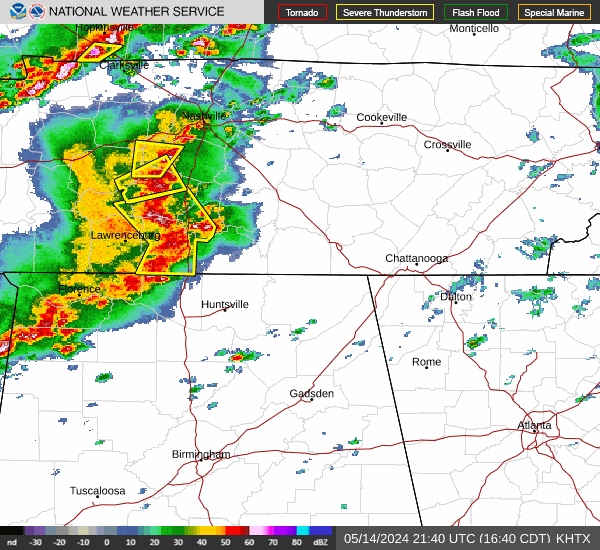
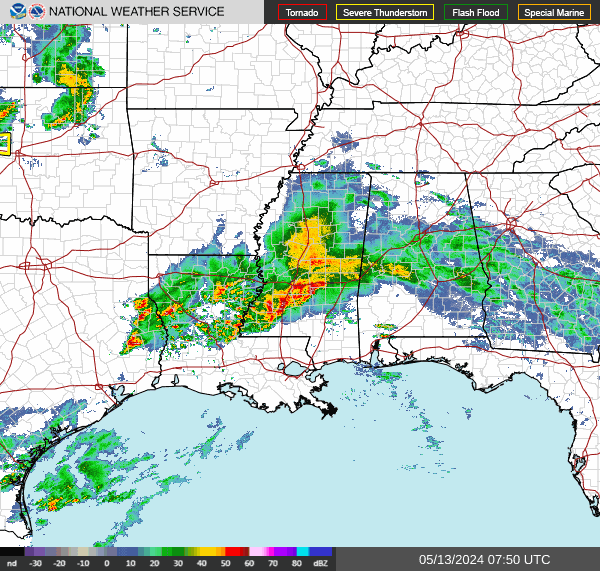












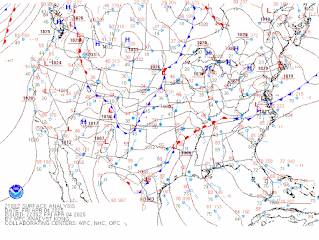

















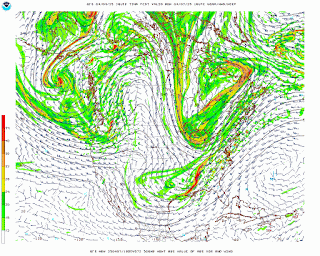




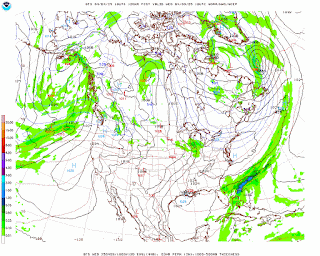








































.png)
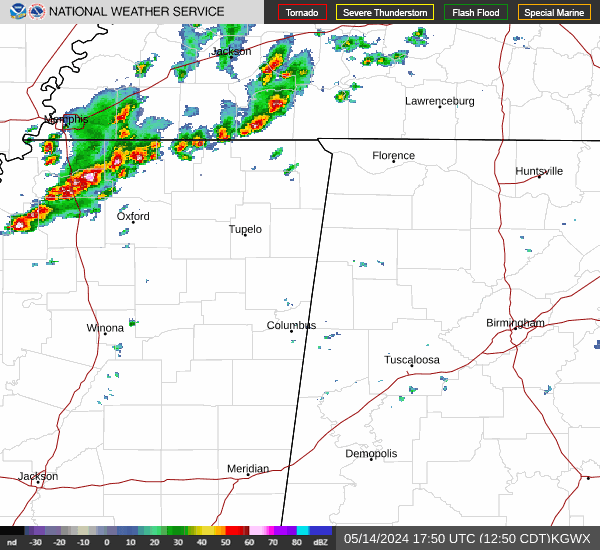
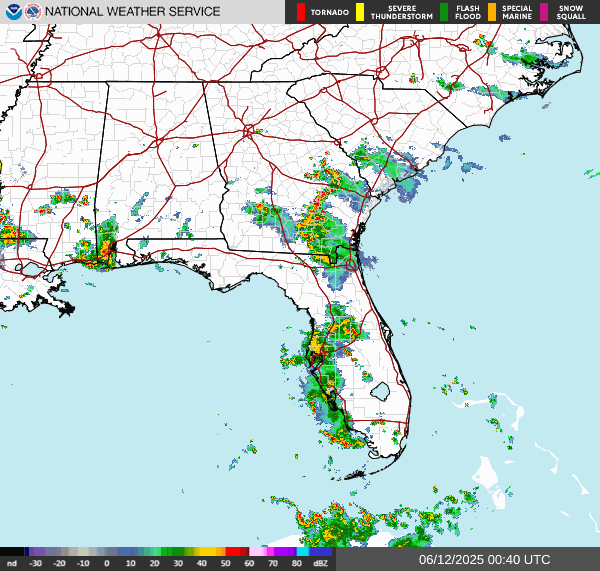




No comments:
Post a Comment